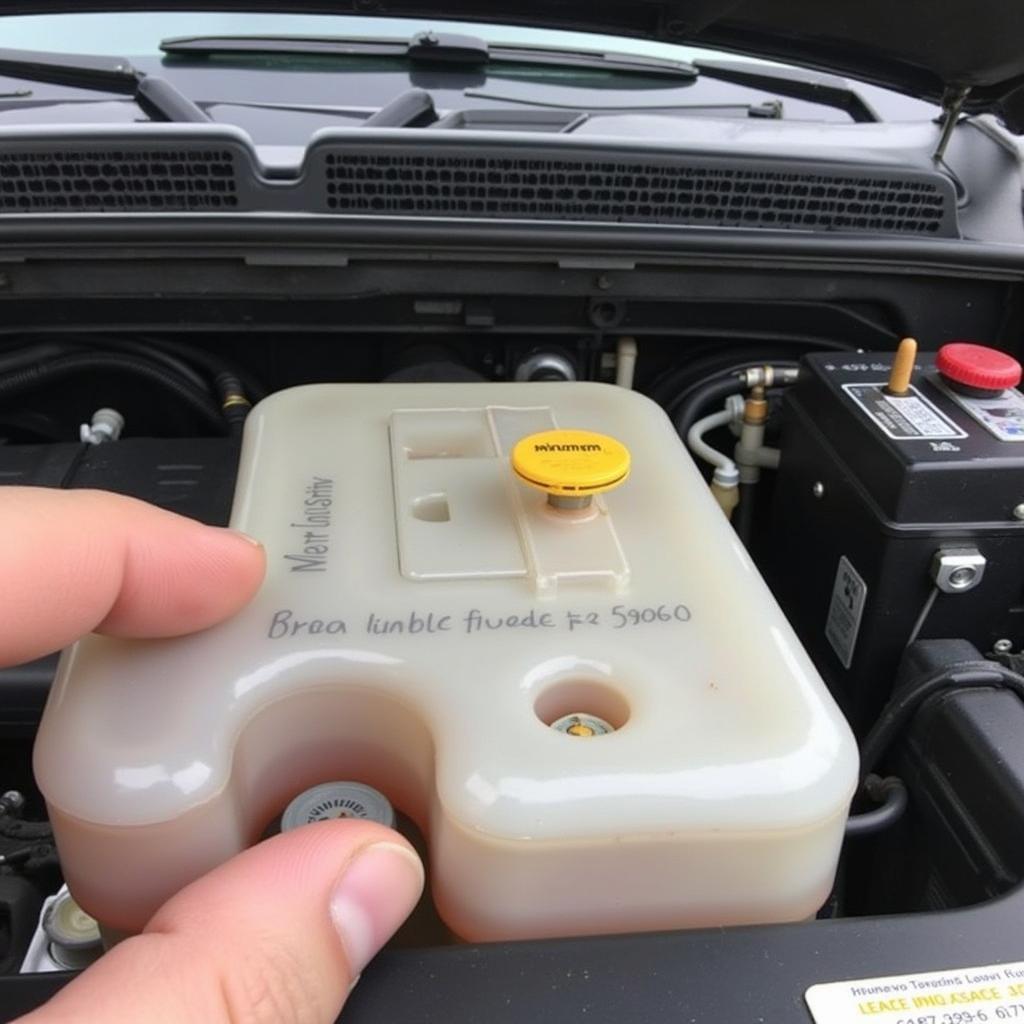A dead car battery can be frustrating, especially when you’re in a hurry. This guide will help you understand why your car battery keeps running down, diagnose the problem, and implement solutions, including remote software fixes when applicable. We’ll explore common causes, troubleshooting steps, and even delve into remote diagnostic and programming services that can address some battery-related issues.
Why is My Car Battery Run Down?
Several factors can contribute to a car battery run down. Understanding the root cause is crucial for effective troubleshooting. Is it simply an old battery reaching the end of its life, or is there an underlying electrical issue draining its power? Identifying the culprit can save you time and money. One common reason is leaving lights on, which can quickly deplete a battery’s charge. Another culprit could be a faulty alternator, which is responsible for recharging the battery while the engine is running.
After the opening paragraph, you might find resources like parasitic battery drain fix cost helpful to understand the financial implications of different solutions.
Common Causes of a Car Battery Run Down
- Old Age: Batteries have a limited lifespan, typically 3-5 years. Over time, their ability to hold a charge diminishes.
- Parasitic Drain: This occurs when an electrical component continues to draw power even when the car is off, slowly draining the battery. Common culprits include interior lights, faulty door switches, and aftermarket accessories.
- Extreme Temperatures: Both extreme heat and cold can affect battery performance. Heat can cause the battery fluid to evaporate, while cold can slow down the chemical reactions necessary for generating power.
- Short Trips: Short trips don’t give the alternator enough time to fully recharge the battery, especially if you frequently use power-hungry features like heated seats or the radio.
- Faulty Alternator: A malfunctioning alternator won’t recharge the battery properly, leading to a gradual discharge.
- Corrosion: Corrosion on the battery terminals can impede the flow of electricity, preventing the battery from charging and discharging efficiently.
Diagnosing a Car Battery Run Down
Diagnosing the problem involves several steps. First, check the battery’s voltage using a multimeter. This provides insights similar to the information you might find when researching reasons battery keeps dying. A healthy battery should read around 12.6 volts. Next, inspect the battery terminals for corrosion. Clean them with a wire brush and baking soda solution if necessary. If the battery voltage is low, try jump-starting the car. If the car starts but the battery dies again soon after, the alternator is likely the issue.
Solutions for a Car Battery Run Down
The solution depends on the diagnosis. A dead battery due to old age requires replacement. A parasitic drain needs further investigation to identify the offending component. A faulty alternator necessitates repair or replacement. Corrosion can be addressed by cleaning the terminals. For more complex electrical issues, consider remote diagnostic and programming solutions. These services can pinpoint problems remotely and even reprogram certain electronic control units (ECUs) to resolve software-related issues.
Remote Diagnostic and Programming
“Remote diagnostics and programming are becoming increasingly valuable in identifying complex electrical faults,” says John Smith, Senior Automotive Electrical Engineer at Acme Auto Solutions. “These tools allow us to access vehicle data remotely and pinpoint issues without requiring a physical inspection, saving time and improving accuracy.”
Troubleshooting Steps for a Car Battery Run Down
- Check the Battery Voltage: Use a multimeter to check the battery voltage.
- Inspect Terminals: Clean corroded terminals.
- Jump-Start: Attempt to jump-start the car.
- Test the Alternator: Have the alternator tested at an auto parts store or mechanic.
- Check for Parasitic Drain: Use a multimeter to measure current draw with the car off.
“In many cases, a simple parasitic drain fix can prevent future battery issues,” adds Jane Doe, Lead Diagnostic Technician at Acme Auto Solutions. “Identifying and addressing these small drains early on can significantly extend the life of your battery.”
Just like the situation described in prius won t start battery not dead, sometimes the problem isn’t the battery itself but a related system.
Preventing a Car Battery Run Down
- Regular Maintenance: Have your battery tested regularly, especially during extreme temperatures.
- Turn Off Accessories: Ensure all lights and accessories are off when the car is parked.
- Limit Short Trips: Try to combine short trips or avoid them altogether when possible.
- Keep Terminals Clean: Regularly clean the battery terminals to prevent corrosion.
It’s also crucial to be aware of bad battery cell symptoms so you can replace your battery promptly. This is particularly important when you experience scenarios similar to car has electric but wont start.
Conclusion
A car battery run down can be caused by various factors, ranging from simple issues like corrosion to more complex problems like a faulty alternator. By following the troubleshooting steps outlined in this guide, you can identify the cause and implement the appropriate solution. Remember, regular maintenance and proactive measures can help prevent future battery problems and keep your car running smoothly.


